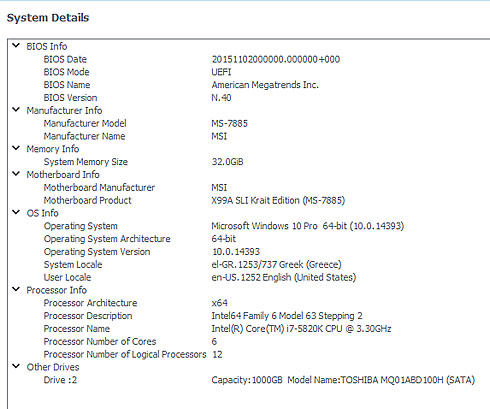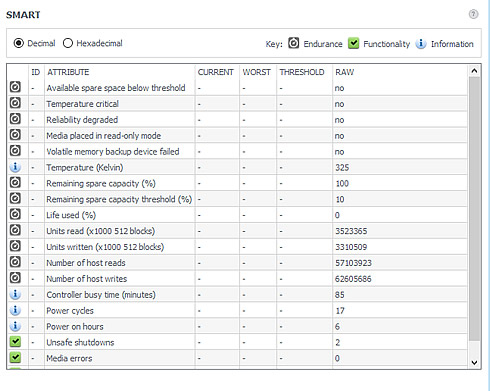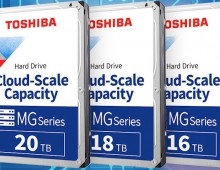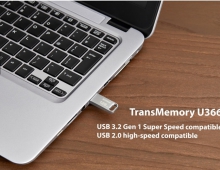Toshiba OCZ RD400 512GB M.2 PCIe SSD
2. A closer look, software
Review Pages
The RD400 packaging ahs the familiar OCZ color and theme, but Toshiba has added its name on it. Our 512GB sample shipped with the add-in card. The card comes with a full-height adapter bracket installed.
Toshiba listed several product features and details about the RD400 on the package, and also notes that Toshiba does not support the Intel RST driver. Without RST support, users cannot assemble a RAID 0, 1 or 5 array on the Intel PCH with Z70 (and future) motherboards.


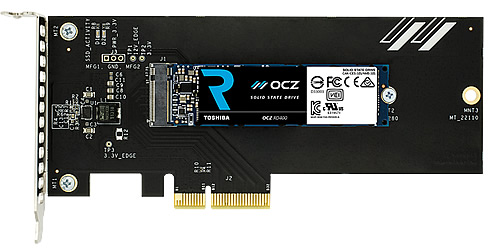
The OCZ RD400 ships ships with or without an add-in card (AIC) adapter, but in our case the 512GB model incudes a card. The RD400 models that include an OCZ-branded M.2 to PCIe 3.0 x4 adapter increase the cost of each drive by $20. You can find M.2 to PCIe adapters at online retailers close to this price point, but to increase compatibility with other systems we recommend purchasing the drive with the adapter card.
The add-in card is a basic design, but it includes a thermal pad under the flash processor. The pad distributes heat to the copper card and reduces the amount of heat passing to the flash.
The RD400 512GB uses a single-sided design with just two NAND flash packages.


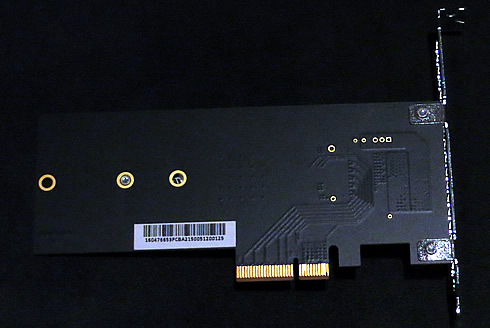
PCIe-NVMe. The first uses the SATA bus that some M.2 sockets implement, and is no faster than 2.5-inch SATA SSDs. The advantages are small size and convenience. The other two types use M.2’s PCIe channels (not all M.2 slots have them) and vary only in the transport protocol: the older AHCI, or the newer NVMe. The RD400, as mentioned earlier, uses NVMe. In most designs to date, AHCI can hang with NVMe when writing, at around 1.2GBps, but NVMe is far faster at reading. You’ll usually get 2GBps or more with NVMe compared to AHCI’s range of 1.1GBps to 1.4GBps.
Note that even if your M.2 slot supports PCIe, your motherboard’s BIOS must support NVMe to boot from an M.2 PCIe-NVMe drive. Most performance motherboards have been upgraded for this, but many mainstream models have not. Older PCIe-AHCI M.2 drives are far more likely to be hassle-free boot drives.
The OCZ RD400 is is compatible with the latest OCZ SSD Utility. With it you can monitor your drive, manually TRIM and secure erase, you can even update your firmware and send support requests to OCZ too. Feel free to click on each of the following screenshots of the OCZ SSD Utility, and see all th detials. Not much have changced from OCZ's SSD Toolbox:

We tested the RD400 512GB SSD in a X99-based MSI motherboard, as you can see below:
Review Pages





